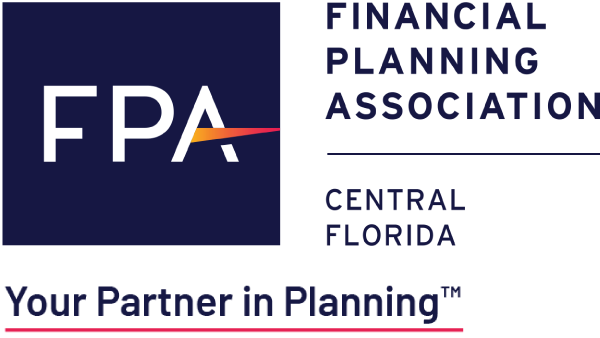
Finish Strong and Start Smart: A Financial To-Do List for Year’s End and the New Year

As much trouble as people have keeping New Year’s resolutions — an estimated 80 percent of resolutions fail within two months, according to findings by U.S. News & World Report — a better approach to goal-attainment might be to quit making resolutions and instead aim for smaller, more manageable targets.
That smaller-bite approach certainly can help when it comes to achieving personal financial goals. Breaking things down into an itemized checklist of small but significant steps can indeed make those goals more attainable and you less prone to feeling like a failure in pursuit of some grandiose but ultimately unrealistic financial resolution. A checklist of financial to-do’s is particularly important this time of year, when the turning of the calendar from one year to the next provides an opportunity to tie up financial loose ends from the year that was while laying the groundwork for success in the year ahead. And unlike many New Year’s resolutions that require constant diligence, once items on the list are complete, you can check them off and move on to the next.
“Life events, important moments and calendar changes are a great time to stop and reflect on what is important,” says FPA member Sean M. Pearson, a CERTIFIED FINANCIAL PLANNER™ professional based in Conshohocken, Pa. “When you are saving and spending on the important things, you’ll feel less financial stress.”
Here, Pearson and a handful of other financial professionals offer suggestions for what to include on an end-of-year/start-of-year personal finance checklist:
- If you don’t have a formal financial plan, start the
process of getting one. “What a
great way to begin the year with a plan in place to help you achieve the
lifestyle you want and can afford,” says FPA member Niv Persaud, CFP®, managing
director at Transition Planning & Guidance in Atlanta, Ga. A financial plan
essentially is a set of strategies that connects a person’s or family’s
resources (their assets) with their near- and long-term life and financial
goals, specifying how they’ll go about achieving those goals by protecting and
growing their assets. The first step toward getting one is to connect with a
financial professional who can devise such a plan on your behalf. To find a CERTIFIED FINANCIAL PLANNER™
professional in your area, use the
Financial Planning Association’s national searchable database, accessible at www.PlannerSearch.org.
- If you already have a formal financial plan, revisit
and update it as necessary. As life
circumstances change, you may need to adjust your financial plan accordingly.
Changes in marital status, the birth of a child, major changes in health or wealth
status — these types of developments typically warrant updates to a financial
plan.
- Review beneficiary information on relevant accounts (investment, bank, insurance
policies, retirement plans, etc.) and update as necessary. Beneficiaries are
the people whom you designate to receive certain assets should you pass away.
Keeping beneficiary designations up-to-date helps to avoid confusion and
potential red tape later.
- Identify one area where you can reduce excessive discretionary spending and act upon it. Persaud recommends finding an app (Mint, Clarity Money and Wally are examples) to help you track your spending in order to identify potential targets, such as curbing spending on dining out or online shopping.
- Pick a
destination where you want to travel in the year ahead, then develop a savings
strategy to fund the trip you envision. Many
of the other items on this checklist are designed to provide the financial
freedom to go places in life — literally and figuratively. So, where do you
want to go next year? Once you figure that out, create a plan to set aside
funds for the trip, such as via an automatic deposit into a high-interest
savings account. To compare savings account interest rates, check out bankrate.com.
- Target one debt and start paying it down more
aggressively. Maybe you’ve been watching
the balance on a high-interest credit card balloon, want to get rid of a
lingering student loan debt quicker, or want to pay down your mortgage more
aggressively. First identify a debt that you want to either get off the books entirely
or at least reduce substantially, then mobilize to pay down that debt, such as
by setting up an auto payment program.
- Set up a retirement plan, such as an individual retirement account (IRA), Roth
IRA or 401(k) or solo 401(k), if you don’t have one already, and start
contributing to it. As a funding source to support you when you stop working,
whether that’s 50 years or 10 years in the future, a retirement plan is one of
the most critical assets a person can own. A financial professional can help to
evaluate and select a plan that’s most suitable for you.
- Increase your retirement savings. “Whether it’s when the calendar turns or when
you get that next annual step-up at work, add 1-2% to whatever contribution you
are saving now,” suggests Pearson. “If the amount is small enough, you won’t
miss it.” Meanwhile, if you already have reached the maximum annual amount that
the law allows people to contribute to a retirement plan on a tax-favored
basis, “look to save in non-retirement vehicles,” suggests Pearson, offering
mutual funds as a good investment option.
- Consider converting an older traditional IRA
into a Roth IRA. Today’s prevailing
lower tax rates make converting a traditional IRA to a Roth IRA more appealing.
Such a maneuver transfers money inside an IRA that would be taxed as income
when it is taken out (generally starting at age 70.5) and puts it into a Roth
IRA, where it comes out tax-free. The logic behind such a maneuver is to pay
taxes now on that money, when tax rates or relatively low, based on the
assumption that those rates likely will be higher later. The person pays the
tax on the converted amount in the tax year in which the conversion is
executed, instead of at age 70.5 or after. Not only does the converted amount have
an opportunity to grow tax-free while in
the Roth account, it also can be taken out tax-free later in life, a nice
complement to traditional IRAs and 401(k)s, distributions from which are taxed as
ordinary income.
- Rebalance investment
assets.
As the value of a person’s asset portfolio (stocks, mutual funds,
fixed vehicles such as bonds, etc.) changes over time, so, too, should how
those assets are allocated across categories. Assets should be aligned to a
person’s stage of life, risk tolerance and goals, and appropriately diversified
to provide growth potential and protection from loss. Periodic portfolio
rebalancing, where funds may need to shift from one asset class to another, enables
investors to maintain appropriate risk in their portfolio.
- Automate contributions to retirement accounts, savings accounts, college savings accounts and the like, and do the same with bill payments. Doing so eliminates the forgetfulness factor and the temptation to skip a contribution or a payment.
- Take inventory of your estate planning
documents. If you
want a say in how your assets are handled when you die, and how key decisions
about your money and your health are made if you’re unable to make them
yourself, you should have a will as well as documents specifying powers of
attorney and medical directives. An estate attorney can help create these
documents if you don’t have them already. And if you do have them, now is a good
time to revisit them to ensure they reflect your current circumstances.
- Make retirement plan contributions by the
appropriate deadline(s). If you
participate in what’s called a solo 401(k), contributions must occur by the end
of the calendar year, explains Robert D. Greenman, CFP®, of
Vista Capital Partners in Portland, Ore. With other retirement accounts, such
as IRAs, taxpayers have until the April tax filing deadline to make
contributions that count for the previous tax year (so an IRA contribution made
on April 15, 2020, could be earmarked as a 2019 tax year contribution, for
example).
- Save more for the short term. “At some point,” says Pearson, “an appliance
will break, someone will need a trip to the urgent care or there will be a
fender-bender. Set aside what you can afford until you have at least three
months’ worth of expenses set aside.” Keep that money (sometimes called an
emergency fund) someplace where it’s accessible without penalty, and where it’s
earning at least a modest interest rate, such as in a high-yield savings
account.
- Remember that RMD. People who are 70 ½ and older and who have assets in an IRA, 401(k) or other qualified retirement account must take a required minimum distribution from those accounts. The deadline to take a distribution is April 1 of the year following the year you turn 70½ and Dec. 31 for subsequent years. RMDs vary by account type, so be sure to verify your required amount. Failing to do so can result in a hefty 50% penalty, not exactly a good way to ring in the New Year!

